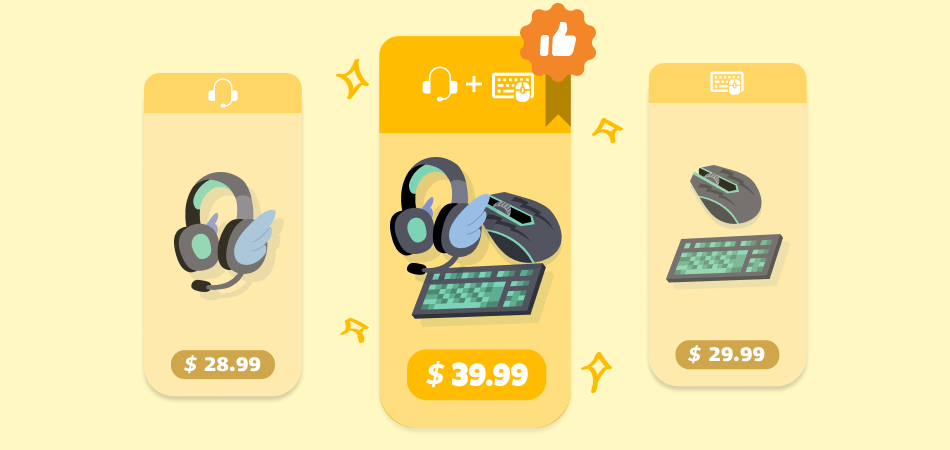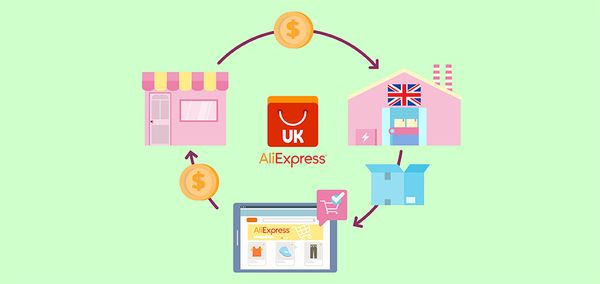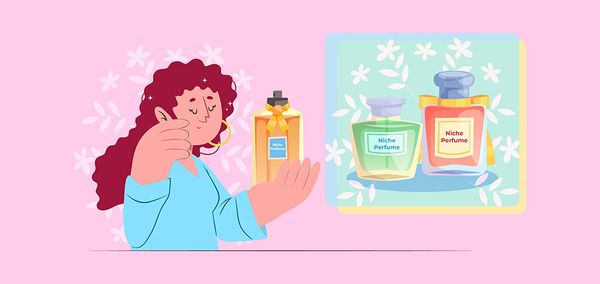Bundle Pricing 101: How to Increase Dropshipping Sales with It

How do you increase dropshipping sales when the dropshipping profit margins are slim? Savvy dropshippers are turning to bundle pricing as a smart, strategic way to increase average order value (AOV), maximize conversions, and provide more value to customers.
Whether you’re new to bundle pricing or looking to fine-tune your strategy, this guide will walk you through everything you need to know in 2025: what it is, why it works, different pricing methods, and how to apply it effectively to your store.
What Is Bundle Pricing
Bundle pricing is a sales approach that involves grouping multiple products and offering them at a lower price than if each item were purchased separately.

|
Adapt Your Product Prices Automatically DSers Automatic Pricing - Pre-set Pricing Rule to mark-up your product price automatically |
The discount can be small or significant, but the key idea is that the bundle offers better value, which encourages customers to spend more in a single transaction.
Consider it a win-win: the customer gets a deal, and the business increases revenue while moving more inventory.
For example, if you sell skincare products, a single moisturizer might cost $20, a bundle of cleanser, toner, and moisturizer might sell for $50 instead of $60.
In this case, the bundle pricing encourages customers to buy all three products instead of just one, boosting your AOV while offering perceived savings.
Why Bundle Pricing Matters for Dropshippers
In dropshipping, you don’t control manufacturing or logistics, but you do control product presentation and pricing.
Bundle pricing is one of the most effective tactics for increasing profitability without needing to increase traffic or add new products. Here’s why.
1. Boost Average Order Value (AOV)
Bundle pricing motivates customers to spend more in a single transaction. By combining related items and offering a small discount, you increase the transaction size without significantly affecting your margins.
2. Enhance Customer Perceived Value
Customers are always looking for deals. When they see bundles, especially with complementary items, they feel like they’re getting more value for less. This improves customer satisfaction and increases the likelihood of a sale.
3. Move More Inventory
If you have products that aren’t selling as well, you can bundle them with popular items. This helps clear slow-moving inventory while still generating revenue.
4. Reduce Decision Fatigue
Bundles simplify the shopping experience. Instead of choosing between five different products, customers can buy a pre-selected combo that’s ready to go. Less thinking, faster checkout.
5. Improve Conversion Rates
The psychological “deal effect” from bundles can nudge shoppers to buy now rather than wait or abandon their carts. Bundle pricing often adds urgency and perceived exclusivity to your offers.
How to Increase Dropshipping Sales with Bundle Pricing
Bundle pricing isn’t just about packaging products together. It’s a powerful sales strategy when used with intention. It gives you an edge in a competitive dropshipping market, helping you maximize the value of every customer visit. Here’s how to apply it in ways that truly increase sales.
1. Create Solution-Oriented Product Bundles
Think beyond bundling similar products and start thinking in terms of outcomes or solutions.
Your customers aren't just buying items, they're trying to solve a problem, fulfill a need, or create a lifestyle. If you can anticipate that and offer a complete solution, they’re much more likely to convert.
If you sell kitchen tools, don’t just offer a set of spatulas—create a “Baking Starter Kit” that includes measuring cups, silicone mats, piping tools, and recipe cards. It tells a story, solves a purpose, and saves the customer time and decision-making.
2. Leverage Bundles During Seasonal Campaigns
Throughout the year, there are countless opportunities to offer themed bundles that resonate with customer emotions.
Shoppers are naturally more motivated during special occasions, and bundles give them an “easy win” when choosing gifts or seasonal items.
You can try the following example ideas:
- “Self-Care Sunday Set” for wellness products in January
- “Valentine’s Day Couple Bundle” with matching items
- “Back-to-School Essentials” with stationery and study accessories
- “Father’s Day Gadget Kit” with tools or tech accessories
When tied to seasonal messaging and limited-time promotions, these bundles create urgency and relevance, driving quick purchasing decisions and higher volumes of sales.
3. Add Urgency with Time-Sensitive Bundle Offers
Adding urgency to a bundle creates FOMO (fear of missing out), which is a strong psychological trigger in e-commerce. Use limited-time availability or stock scarcity messaging to encourage quicker purchases.
Practical ways to create urgency include:
- Countdown timers for “bundle deals of the week”
- Labels like “Only 10 left in stock!” or “Selling Fast”
- Bundles that are only available during promotions or holidays
4. Implement Tiered Bundle Options for Greater Upsells
Not all customers have the same budget. That’s why tiered bundling is an excellent way to offer options and subtly encourage customers to spend more.
Present bundles at three different levels:
- Basic Tier – entry-level with 2–3 products
- Standard Tier – your most popular bundle, offering the best value
- Premium Tier – larger set or bonus item included, priced higher
Structure it so the mid-tier feels like the “smartest” choice with the best value-to-cost ratio. This psychological pricing technique, called decoy pricing, often nudges customers to go for the higher-value bundle, increasing your AOV.
Types of Bundle Pricing Strategies
Different types of bundles serve different business goals, from introducing new products to clearing excess inventory. Here’s a breakdown of the most effective types of bundle pricing strategies and how they work in a dropshipping context.
1. Pure Bundling
In pure bundling, the products in the set are not sold separately, they’re only available as a complete package. This strategy works well when launching exclusive kits or limited-time collections.
You launch a “Glow-Up Skincare Kit” that includes a cleanser, toner, and serum. Customers can’t purchase these items individually—only as a bundle.
This approach builds exclusivity and simplifies inventory planning since you’re promoting the bundle as a single unit. It’s ideal for niche stores or brand-new product lines.
2. Mixed Bundling
Mixed bundling gives customers flexibility: they can purchase each item individually or choose the bundle at a discounted price.
A home office store sells a mouse ($20), keyboard ($40), and webcam ($35). Each item can be bought alone, but the complete “Work-from-Home Tech Pack” is offered at $85 instead of $95.
This strategy works well because customers can see the value in the bundle while maintaining the freedom to choose. It’s excellent for increasing perceived value and incentivizing bulk purchases.
3. Cross-Sell Bundling
This involves pairing a popular item with one or more lesser-known or lower-demand products that complement it. It's a great way to boost exposure for items that need more visibility.
You sell a best-selling wireless speaker. By bundling it with a cleaning kit or charging cable (items that usually don't sell well alone), you increase units sold across your product range.
This method increases customer discovery and often improves product turnover for slower-selling items, without requiring aggressive discounts.
4. Quantity or Volume Bundling
Also known as “Buy More, Save More,” this strategy encourages bulk purchasing by offering progressively better deals.
Here is an example of this type of bundle pircing:
- Buy 1 for $15
- Buy 2 for $25
- Buy 3 for $33
This works exceptionally well for consumable products (like supplements, fashion accessories, socks, or beauty items) and increases perceived savings, encouraging shoppers to buy more than they initially intended.
5. Custom Bundling
With custom bundling, shoppers build their own bundle from a selection of items. This increases engagement and satisfaction by giving them control over what they buy.
“Build Your Own Snack Box” lets the customer choose any 5 snacks from a list of 20 for a set price.
This strategy increases time spent on site (great for SEO and engagement), improves personalization, and is perfect for upselling through product variety.
How to Set Bundle Pricing for Dropshipping
Setting the right price for your bundles is a balancing act. It needs to offer visible value to the customer while protecting your profit margins. Here’s how to price strategically.
1. Understand Your True Costs
Before you even think about setting a price, it’s crucial to understand how much the bundle costs you to deliver.
This means calculating your total cost of goods sold (COGS), not just the supplier’s item price, but also shipping costs, payment processing fees (like PayPal or Stripe), platform fees (if you're on Shopify or WooCommerce), and any additional app or plugin expenses tied to the bundle.

|
Pre-set the Best Shipping Methods DSers Shipping Settings - Pre-select your favorite shipping method to save money and time |
This step ensures that you don’t underprice your products and accidentally operate at a loss. Once you know your baseline cost, you can confidently determine how much of a discount you can afford to offer while still maintaining healthy margins.
2. Highlight the Savings with Price Anchoring
Once you have your pricing structure, make sure to display it in a way that emphasizes the customer’s savings.
This is where price anchoring becomes powerful. Let’s say your bundle includes three items that individually cost $25, $15, and $10.
Instead of simply listing the bundle price as $42, show the regular total of $50 and strike it out—then list the discounted bundle price right beneath it, followed by “You save $8!”
This visual contrast draws attention to the value of the bundle, and that small psychological nudge can significantly improve conversion rates.
When shoppers feel like they’re getting a deal, they’re far more likely to act quickly.
3. Offer a Discount to Encourage a Sale
While a big discount may sound appealing, you don’t need to give away your profit to entice buyers.
A 10% to 20% discount range is often enough to trigger a sale, especially when the products are perceived as valuable or complementary.
The key is to strike a balance: offer a meaningful discount that motivates a purchase but doesn’t cut too deeply into your profits.
If you're bundling high-margin products, you can afford to be more generous. But even small savings, when presented, can do the job.
4. Use Tiered Pricing to Drive Higher Order Values
Tiered bundles, such as basic, standard, and premium options—are another highly effective way to increase order value.
The idea is to guide customers toward spending more by presenting a series of logical upgrades.
For instance:
- Basic Bundle – 2 items for $29
- Standard Bundle – 3 items for $39
- Premium Bundle – 5 items plus a bonus for $55
By structuring your pricing this way, customers often compare the options and decide that the standard or premium tier offers the best value.
This strategy, often referred to as decoy pricing, can drive higher conversions and lift your average order size without feeling pushy.
5. Test, Analyze, and Optimize Over Time
Finally, remember that pricing isn’t static. The first bundle price you launch won’t necessarily be your most effective.
Use data to test different combinations, formats, and price points. Try varying your discount amount or switching up which products you bundle together.
Keep a close eye on your key performance indicators (KPIs), including:
- Conversion rates
- Cart abandonment
- Average order value
- Revenue per visitor
Are certain bundles performing better than others? Do customers seem to favor specific price points or themes?
Leverage these insights to enhance your strategy and develop bundles that genuinely connect with your audience.
Wrapping Up
Bundle pricing isn’t just a sales gimmick, it’s a smart, strategic approach that taps into buyer psychology and boosts your store’s bottom line.
For dropshippers, it’s one of the most accessible ways to increase average order value and build customer loyalty.
By understanding how to choose the right products, set the right price, and promote your bundles effectively, you can transform casual shoppers into high-value buyers without needing more traffic or new SKUs.
Whether you're running a niche store or managing a general product catalog, bundle pricing will continue to be a top growth strategy in 2025 and beyond.











 Company
Company
 Why Choose DSers
Why Choose DSers
 Blog
Blog
 Help Center
Help Center




 Live Chat
Live Chat